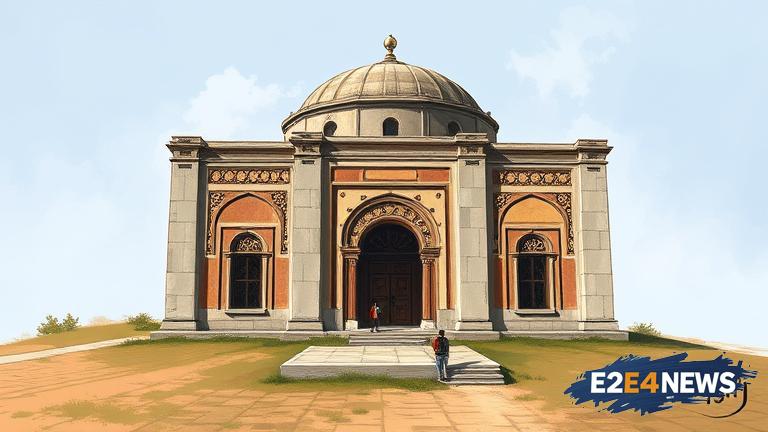Azerbaijan has begun the restoration of Momina Khatun’s Tomb, a significant historical monument located in the city of Nakhchivan. The tomb, built in the 12th century, is a masterpiece of Azerbaijani architecture and a testament to the country’s rich cultural heritage. The restoration project aims to preserve the tomb’s original structure and beauty, ensuring its longevity for future generations. The initiative is part of the Azerbaijani government’s efforts to protect and promote the country’s historical and cultural landmarks. Momina Khatun’s Tomb is considered one of the most important monuments in Nakhchivan, attracting tourists and history enthusiasts from around the world. The tomb’s unique design and intricate stone carvings make it a remarkable example of medieval architecture. The restoration project will involve a team of experts, including architects, historians, and conservationists, who will work together to restore the tomb to its original state. The project is expected to take several months to complete, with a focus on preserving the tomb’s original materials and techniques. The Azerbaijani government has allocated significant funds for the restoration project, demonstrating its commitment to preserving the country’s cultural heritage. The restoration of Momina Khatun’s Tomb is not only important for Azerbaijan but also for the international community, as it is a significant part of the world’s cultural heritage. The tomb is a symbol of Azerbaijan’s rich history and cultural diversity, and its restoration will help to promote cross-cultural understanding and appreciation. The project will also create opportunities for cultural exchange and cooperation between Azerbaijan and other countries. In addition to the restoration of the tomb, the project will also involve the development of a museum and a cultural center, which will provide visitors with a deeper understanding of the tomb’s history and significance. The museum will feature exhibits on the history of the tomb, as well as the culture and traditions of the region. The cultural center will offer a range of activities, including workshops, lectures, and cultural events, which will help to promote the tomb and the surrounding region as a tourist destination. The restoration of Momina Khatun’s Tomb is a significant step towards preserving Azerbaijan’s cultural heritage, and it is expected to have a positive impact on the country’s tourism industry. The project will also help to raise awareness about the importance of cultural preservation and the need to protect historical monuments for future generations. In conclusion, the restoration of Momina Khatun’s Tomb is a vital project that will help to preserve Azerbaijan’s cultural heritage and promote cross-cultural understanding and appreciation. The project is a testament to the Azerbaijani government’s commitment to protecting and promoting the country’s historical and cultural landmarks, and it is expected to have a lasting impact on the country’s tourism industry and cultural landscape. The restoration of the tomb will also serve as a model for other cultural preservation projects in the region, demonstrating the importance of preserving historical monuments and promoting cultural heritage. Furthermore, the project will help to strengthen cultural ties between Azerbaijan and other countries, promoting mutual understanding and respect. Overall, the restoration of Momina Khatun’s Tomb is a significant initiative that will help to preserve Azerbaijan’s cultural heritage and promote cross-cultural understanding and appreciation.
